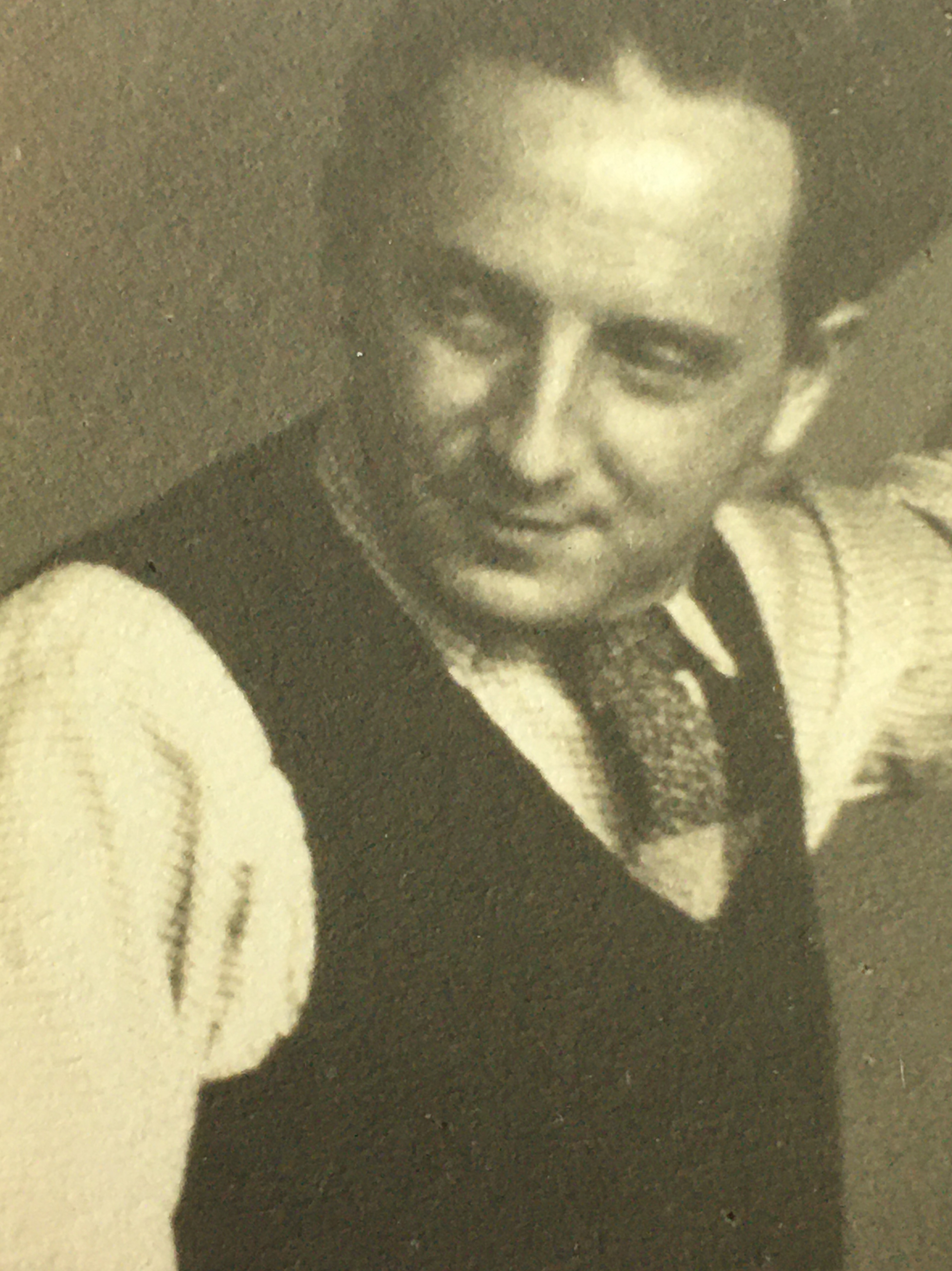Archive
Hans Schleger
- Hans
- Schleger
Zéró
- 29-12-1898
- Kempen (DE)
- 18-09-1976
- London (GB)
- Graphic Designer
Some of the most important work of Hans Schleger was created for London Transport. He relaunched London Transport bus stop signs and was responsible for a series of Blackout posters.
Word Count: 30

Zéró (Hans Schleger), In the Blackout to hail a bus or tram shine your torch on to your hand, 1943, poster (© TfL from the London Transport Museum collection, © estate of Hans Schleger). 
Zéró (Hans Schleger), Bus stop sign, 1935 (© TfL from the London Transport Museum collection, © estate of Hans Schleger). 
Hans Schleger at his home in Swan Court, London, 1930s (© estate of Hans Schleger). Black, Jonathan. “For the People’s Good: Hans Schleger (1898–1976), Poster Design and British National Identity, 1935–60.” Transnationalism and Visual Culture in Britain: Émigrés and Migrants 1933 to 1956, special issue of Visual Culture in Britain, vol. 13, no. 2, pp. 169–190. Taylor & Francis Online, doi: doi.org/10.1080/14714787.2012.678769. Accessed 9 March 2021.
Bownes, David, and Oliver Green, editors. London Transport Posters. A Century of Art and Design. Lund Humphries, 2008.
Hans Schleger – a life of design, exh. cat. Victoria & Albert Museum, London, 2007.
Kunst im Exil in Großbritannien 1933–1945, exh. cat. Neue Gesellschaft für bildende Kunst, Berlin, 1986.
Schleger, Hans. “The Function and Limitation of the Trade Mark.” (1962) Pat Schleger. Zéró. Hans Schleger – A Life of Design. Princeton Architectural Press, 2001, p. 77.
Schleger, Pat. Zéró. Hans Schleger – A Life of Design. Princeton Architectural Press, 2001.
Ziegler, Philip. London at War 1939–1945. Knopf, 1995.
Word Count: 133
London Transport Museum collection.
Victoria & Albert Museum, London, Hans Schleger archive.
Word Count: 12
My deepest thanks go to Helen Draper and Maria Schleger and also to Caterina Tiezzi (London Transport Museum) for their kind help and permission to reproduce the works of Hans Schleger.
Word Count: 31
London, UK (1932–1976).
Clanricarde Gardens, Bayswater, London W2 (1933–?); Swan Court, Chelsea Manor Street, Chelsea, London SW3 (1930s); Sloane Avenue, Chelsea, London SW3 (1939/40?); 14 Sydney Close, Kensington, London SW3 (studio, 1947–1976); 15 The Boltons, Kensington, London SW10 (residence, 1957?–1976).
- London
- Burcu Dogramaci. "Hans Schleger." METROMOD Archive, 2021, https://archive.metromod.net/viewer.p/69/1470/object/5138-11258404, last modified: 01-05-2021.
-
Margaret LeischnerTextile DesignerLondon
The designer Margaret Leischner lived in England from 1938, worked for textile and furniture companies, taught at the Royal College of Art and was honoured as Royal Designer for Industry.
Word Count: 29